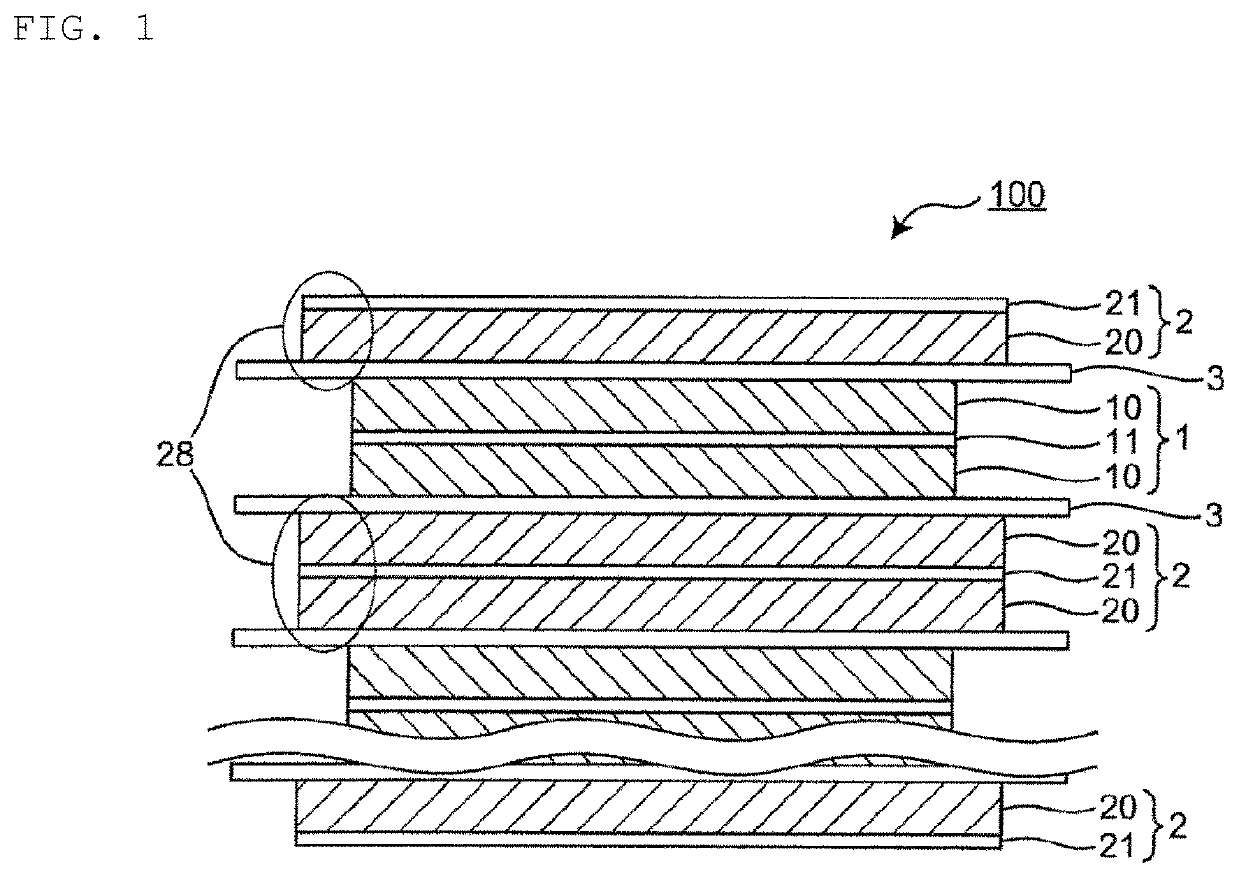Lithium ion secondary battery
a secondary battery and lithium ion technology, applied in the field of lithium ion secondary batteries, can solve the problems and achieve the effects of deterioration of cycle characteristics, increased voltage, and promoted deterioration of battery materials
- Summary
- Abstract
- Description
- Claims
- Application Information
AI Technical Summary
Benefits of technology
Problems solved by technology
Method used
Image
Examples
examples
[0125]
[0126](Manufacture of Positive Electrode)
[0127]As the positive electrode active material, lithium cobaltate (LCO1) shown in Table 1 was used. In this example, 97.5% by weight of LCO1, 1.0% by weight of carbon nanotubes having an average diameter of 5 nm and an average chain length of 200 μm as a conductive auxiliary agent, and 1.5% by weight of polyvinylidene fluoride as a binder were used. These were mixed with NMP to obtain positive electrode mixture slurry. Next, the positive electrode mixture slurry was applied uniformly to aluminum foil having a thickness of 10 μm and rolled with a roll press, so that a single-sided positive electrode having the positive electrode active material layer on one surface was obtained. The basis weight (per surface) of the positive electrode active material layer of the positive electrode was 19.0 mg / cm2, and the density was 4.10 g / cm3. The basis weight and density of the positive electrode active material layer were common in an example and a...
PUM
| Property | Measurement | Unit |
|---|---|---|
| density | aaaaa | aaaaa |
| density | aaaaa | aaaaa |
| voltage | aaaaa | aaaaa |
Abstract
Description
Claims
Application Information
 Login to View More
Login to View More - R&D
- Intellectual Property
- Life Sciences
- Materials
- Tech Scout
- Unparalleled Data Quality
- Higher Quality Content
- 60% Fewer Hallucinations
Browse by: Latest US Patents, China's latest patents, Technical Efficacy Thesaurus, Application Domain, Technology Topic, Popular Technical Reports.
© 2025 PatSnap. All rights reserved.Legal|Privacy policy|Modern Slavery Act Transparency Statement|Sitemap|About US| Contact US: help@patsnap.com


